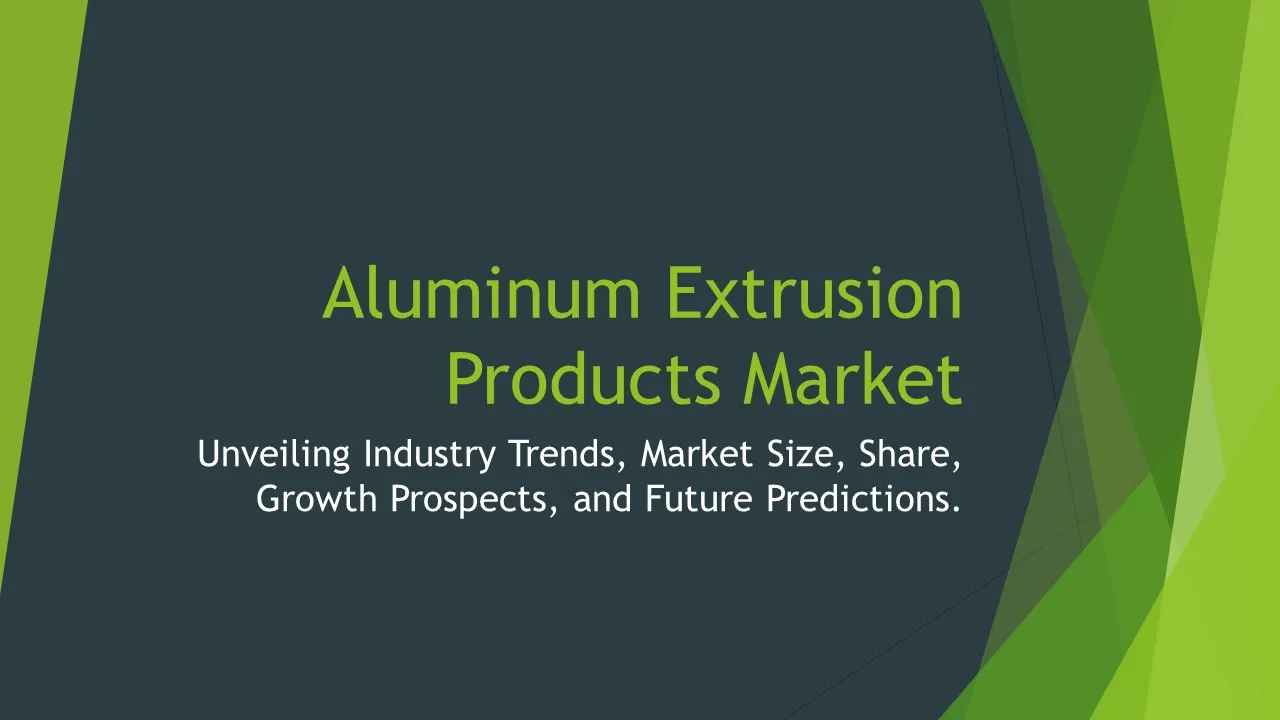Non Metallic Enclosures
Non Metallic Enclosures Market Segments - by Product Type (Polycarbonate Enclosures, Fiberglass Enclosures, ABS Enclosures, PVC Enclosures, HDPE Enclosures), Application (Industrial, Commercial, Residential, Utility, Transportation), Distribution Channel (Direct Sales, Indirect Sales), Material Type (Plastic, Fiberglass), and Region (North America, Europe, Asia Pacific, Latin America, Middle East & Africa) - Global Industry Analysis, Growth, Share, Size, Trends, and Forecast 2025-2035
- Report Preview
- Table Of Content
- Segments
- Methodology
Non Metallic Enclosures Market Outlook
The global non-metallic enclosures market is projected to reach approximately USD 3.5 billion by 2035, growing at a Compound Annual Growth Rate (CAGR) of around 6.5% from 2025 to 2035. This growth can be attributed to the increasing demand for non-metallic enclosures across various applications, including industrial, commercial, and residential sectors. The shift towards lightweight and corrosion-resistant materials, coupled with technological advancements in enclosure design, is further driving this market. Additionally, the expanding infrastructure development in emerging economies, as well as the growing focus on safety and reliability in electrical installations, are significant factors contributing to the market's expansion. Furthermore, increasing awareness regarding energy efficiency and sustainability is prompting industries to adopt non-metallic solutions, which are perceived to be environmentally friendly.
Growth Factor of the Market
The non-metallic enclosures market is experiencing robust growth due to several pivotal factors that are reshaping the landscape. One of the primary drivers is the increasing demand for lightweight and durable enclosures in various industries, which enhances operational efficiency. Additionally, the growing trend towards automation and smart technologies in sectors such as manufacturing and transportation is leading to a higher requirement for electronic enclosures that protect sensitive equipment. The focus on sustainability and environmental regulations also plays a crucial role, as non-metallic materials, particularly those that utilize recycled content, are gaining traction. Moreover, advancements in material science have led to the development of high-performance plastics and fiberglass that offer superior protection against harsh environmental conditions. The escalating investments in renewable energy projects, including solar and wind power, further contribute to the rising demand for non-metallic enclosures, as they are essential for housing electrical components in these applications.
Key Highlights of the Market
- The non-metallic enclosures market is expected to reach USD 3.5 billion by 2035.
- The market is projected to grow at a CAGR of 6.5% from 2025 to 2035.
- Increasing demand for lightweight and corrosion-resistant materials is a significant driver.
- Technological advancements in enclosure design are positively impacting market growth.
- Growing focus on energy efficiency and sustainability is leading to higher adoption rates.
By Product Type
Polycarbonate Enclosures:
Polycarbonate enclosures are a dominant segment in the non-metallic enclosures market, known for their high impact resistance and transparency. These enclosures are widely used in applications requiring visual monitoring of the components housed within, such as in electrical control panels and junction boxes. Their lightweight nature and excellent thermal stability make them suitable for various environmental conditions. Furthermore, polycarbonate enclosures are UL-rated for fire resistance, ensuring safety in applications where flammability is a concern. The versatility and durability of polycarbonate contribute to its growing demand across industrial and commercial sectors, thereby significantly bolstering market growth.
Fiberglass Enclosures:
Fiberglass enclosures are increasingly popular due to their exceptional resistance to corrosion and harsh chemicals, making them an ideal choice for use in industrial environments. These enclosures exhibit excellent electrical insulating properties and can withstand extreme temperatures, which is vital for protecting electronic components in various applications. The lightweight yet robust nature of fiberglass makes it suitable for installation in locations where weight considerations may be critical, such as on poles or masts. The growing chemical processing industry, along with the need for reliable equipment protection in outdoor installations, is driving the demand for fiberglass enclosures significantly.
ABS Enclosures:
ABS (Acrylonitrile Butadiene Styrene) enclosures are characterized by their impact resistance and ease of fabrication. They are widely employed in applications that require a combination of strength and lightweight properties. ABS enclosures are particularly favored in the telecommunications and electronics sectors for housing sensitive equipment and components. The material's inherent resistance to stress cracking and its ability to withstand various environmental conditions make ABS enclosures a reliable choice for diverse applications. As the electronics industry continues to evolve, the demand for ABS enclosures is expected to grow, catering to the need for lightweight yet durable protection.
PVC Enclosures:
PVC (Polyvinyl Chloride) enclosures are known for their affordability and ease of installation. They are commonly used in residential and commercial applications where cost-effectiveness is a priority. PVC enclosures provide adequate protection against moisture and dust, making them suitable for indoor use. Moreover, their resistance to environmental factors such as UV rays further enhances their usability in various settings. The ongoing trend towards home automation and smart devices is driving the adoption of PVC enclosures, as they are often used to house electrical connections and junction boxes in residential wiring systems.
HDPE Enclosures:
High-Density Polyethylene (HDPE) enclosures have gained traction due to their excellent resistance to impact and chemicals, making them ideal for harsh industrial environments. These enclosures are lightweight yet robust, providing a high level of protection for critical equipment. The flexibility in design and fabrication allows for tailored solutions to meet specific application requirements. Additionally, HDPE is recognized for being environmentally friendly, as it can be recycled and reused. As industries increasingly prioritize sustainability, the demand for HDPE enclosures is expected to rise, aligning with broader environmental goals.
By Application
Industrial:
The industrial segment is one of the largest applications for non-metallic enclosures, driven by the need for reliable protection of electrical and electronic equipment in factories and manufacturing plants. Non-metallic enclosures provide essential safeguarding against dust, moisture, and mechanical impacts, ensuring uninterrupted operations. Industries such as oil and gas, manufacturing, and food processing are increasingly adopting these enclosures due to their durability and resistance to various environmental factors. As industrial automation continues to advance, the demand for robust non-metallic enclosures is expected to grow, supporting the need for enhanced safety and efficiency.
Commercial:
In the commercial sector, non-metallic enclosures are utilized primarily for housing electrical distribution equipment, telecommunications systems, and smart building technologies. The rising trend of smart cities and infrastructure development is fueling the demand for these enclosures, as they play a crucial role in protecting sensitive equipment and ensuring operational efficiency. Non-metallic enclosures are favored in commercial applications due to their lightweight nature, which simplifies installation and maintenance. As businesses increasingly focus on sustainability and energy efficiency, the role of non-metallic enclosures in commercial environments is set to expand significantly.
Residential:
In the residential sector, non-metallic enclosures are essential for electrical systems, smart home devices, and outdoor installations such as lighting and security systems. The growing trend of home automation is driving the need for reliable and aesthetically pleasing enclosures that protect electrical components while blending seamlessly with modern home designs. Non-metallic enclosures offer advantages such as resistance to moisture and UV rays, making them suitable for various outdoor applications. The demand for energy-efficient and sustainable solutions in residential construction is further enhancing the market for non-metallic enclosures in this segment.
Utility:
Utility applications represent a significant market for non-metallic enclosures, particularly for housing electrical components in substations, transformers, and other critical infrastructure. These enclosures provide essential protection against environmental elements, ensuring the reliability and longevity of utility equipment. The increasing investments in renewable energy sources such as solar and wind power are fueling the demand for non-metallic enclosures, as they are used extensively in the installations of solar panels and wind turbines. The need for reliable and durable enclosures in utility applications is set to drive market growth in this segment significantly.
Transportation:
In the transportation sector, non-metallic enclosures are critical for protecting electronic systems in vehicles, trains, and aircraft. As the automotive industry moves towards automation and electrification, the demand for lightweight and durable enclosures is on the rise. Non-metallic materials such as fiberglass and high-performance plastics are preferred for their strength-to-weight ratio, which contributes to vehicle efficiency and performance. Furthermore, the growing emphasis on safety regulations in transportation is driving the adoption of reliable enclosures that can withstand harsh environmental conditions. As the transportation industry continues to evolve, the importance of non-metallic enclosures will only increase, fostering further market growth.
By Distribution Channel
Direct Sales:
Direct sales channels play a vital role in the distribution of non-metallic enclosures, allowing manufacturers to build strong relationships with end-users. This approach enables companies to provide tailored solutions that meet specific customer requirements, leading to enhanced customer satisfaction and loyalty. Direct sales often involve a dedicated sales team that can offer technical support and guidance throughout the purchasing process, ensuring that customers select the most suitable products for their applications. Additionally, manufacturers can gather valuable feedback from customers, which can be used to improve product offerings and drive innovation in enclosure design.
Indirect Sales:
Indirect sales channels, including distributors, wholesalers, and retailers, are also significant contributors to the non-metallic enclosures market. These channels provide manufacturers with broader market access and help reach a wider audience across various regions. Distribution partners often have established relationships with local businesses, enabling manufacturers to capitalize on these networks for efficient product distribution. Indirect sales allow for increased market penetration and help manufacturers adapt to local market demands more effectively. The growth of e-commerce platforms is further enhancing indirect sales channels, providing customers with convenient access to non-metallic enclosures and facilitating online transactions.
By Material Type
Plastic:
Plastic enclosures are a dominant material type in the non-metallic enclosures market due to their lightweight, cost-effective, and versatile nature. They are widely utilized across various applications, including industrial, commercial, and residential sectors. The ability of plastic enclosures to resist moisture, chemicals, and UV rays makes them suitable for both indoor and outdoor applications. Additionally, advancements in plastic materials have led to the development of high-performance options that provide superior protection for sensitive electronics. The growing preference for sustainable materials is further driving the adoption of plastic enclosures, as many manufacturers are now producing recyclable options.
Fiberglass:
Fiberglass is another prominent material type in the non-metallic enclosures market, recognized for its exceptional strength and durability. Fiberglass enclosures are particularly suitable for harsh environments where chemical resistance and mechanical strength are paramount. They are commonly used in industries such as oil and gas, wastewater treatment, and chemical processing, where traditional materials may fail due to corrosive substances. The longevity and low maintenance requirements of fiberglass enclosures make them a cost-effective solution for many applications. As industries continue to seek reliable protection for critical equipment, the demand for fiberglass enclosures is expected to remain strong.
By Region
The North American region holds a significant share of the non-metallic enclosures market, driven by the presence of numerous industrial sectors and a strong focus on safety regulations. The region's emphasis on advanced manufacturing technologies and automation is further fueling the demand for high-quality non-metallic enclosures. In 2023, North America accounted for approximately 35% of the global market share, with a projected CAGR of 5.5% through 2035. The increasing investments in infrastructure development and the rising adoption of renewable energy sources are expected to propel market growth in the region.
In contrast, the Asia Pacific region is anticipated to witness the highest growth rate in the non-metallic enclosures market, with an impressive CAGR of 8.0% from 2025 to 2035. The rapid industrialization and urbanization in emerging economies, such as China and India, are driving demand for non-metallic enclosures across various applications. The region's focus on energy efficiency and sustainability is also prompting the adoption of non-metallic solutions in industrial and commercial sectors. Moreover, the growing electronics and telecommunications industries in Asia Pacific are expected to significantly contribute to the market's expansion. In 2023, the Asia Pacific region accounted for around 30% of the global market share.
Opportunities
The non-metallic enclosures market is poised to capitalize on several key opportunities that can significantly enhance growth prospects. One of the most promising opportunities lies in the increasing investments in renewable energy projects across the globe. As governments and organizations prioritize sustainability and carbon reduction, the demand for reliable protection solutions for solar panels, wind turbines, and energy storage systems is on the rise. Non-metallic enclosures offer excellent protection against moisture and environmental hazards, making them ideal for housing electrical components in these renewable energy applications. The ongoing transition towards greener energy sources presents a unique market opportunity for manufacturers specializing in non-metallic enclosures, allowing them to expand their product offerings to cater to this growing sector.
Another opportunity for growth in the non-metallic enclosures market is the increasing trend of smart technologies and automation in various industries. With the rise of IoT (Internet of Things) devices and smart home technologies, there is a significant demand for enclosures that can securely house sensitive electronic components while providing easy access for maintenance. Manufacturers can leverage this trend by developing innovative enclosure designs that incorporate features such as modularity, enhanced ventilation, and aesthetic appeal. By aligning product development with the evolving needs of the smart technology sector, companies can tap into a lucrative market segment and gain a competitive edge in the evolving landscape of non-metallic enclosures.
Threats
Despite the promising growth trajectory of the non-metallic enclosures market, several threats could hinder its progress. One of the primary concerns is the growing competition from alternative materials and products. As technology advances, new materials such as advanced composites and hybrid enclosures are being developed, which may offer enhanced performance characteristics compared to traditional non-metallic enclosures. Additionally, the increasing trend of manufacturers moving towards energy-efficient and eco-friendly materials could lead to a shift in consumer preferences, impacting the demand for specific non-metallic solutions. Companies must continuously innovate and adapt to stay competitive in this dynamic market, ensuring that their products meet the evolving needs of end-users.
Another threat to the non-metallic enclosures market is the fluctuating prices of raw materials used in manufacturing these products. The volatility in the prices of plastics and fiberglass can affect production costs and profit margins for manufacturers. Additionally, disruptions in supply chains due to geopolitical tensions, trade restrictions, or natural disasters can result in delays or shortages in material availability. These factors can create uncertainty in the market, potentially impacting the ability of companies to meet customer demand and maintain stable pricing strategies. To mitigate these risks, manufacturers need to develop robust supply chain management strategies and explore alternative sourcing options to ensure a steady supply of materials.
Competitor Outlook
- Schneider Electric SE
- ABB Ltd.
- Hoffman Enclosures LLC (part of Pentair)
- Panduit Corporation
- Siemens AG
- Rittal GmbH & Co. KG
- Amphenol Corporation
- TE Connectivity Ltd.
- Adalet Division of Emerson Electric Co.
- Legrand SA
- Gargoyle Enclosures
- Cooper Crouse-Hinds
- Sinclair & Rush
- Rose Bopla Kunststoffwerk GmbH
- Bud Industries Inc.
The non-metallic enclosures market features a highly competitive landscape with several key players striving to gain market share through innovation and strategic initiatives. Companies are focusing on enhancing their product offerings by investing in research and development to create advanced materials and designs that meet the evolving needs of customers. The competitive dynamics are characterized by a mix of global and regional players, each leveraging their strengths to establish a foothold in the market. As the demand for non-metallic enclosures continues to rise across various sectors, manufacturers are increasingly collaborating with suppliers and distributors to strengthen their distribution networks and ensure timely delivery of products to customers.
Major companies in the non-metallic enclosures market, such as Schneider Electric and ABB, are known for their extensive product portfolios and strong brand recognition. Schneider Electric, for instance, offers a wide range of non-metallic enclosures for various applications, including industrial automation and power distribution. Their commitment to sustainability and energy efficiency resonates well with market trends, further enhancing their competitive position. On the other hand, ABB's expertise in electrical solutions allows them to provide innovative enclosure designs that cater to the specific needs of their clients, particularly in the renewable energy sector. The strategic acquisitions and partnerships undertaken by these market leaders play a critical role in expanding their reach and capabilities in the non-metallic enclosures market.
Another notable player, Hoffman Enclosures, focuses on providing high-quality and customizable non-metallic solutions tailored to meet the diverse requirements of various industries. Their strong emphasis on customer service and technical support sets them apart in a competitive landscape, allowing them to build lasting relationships with clients. Additionally, companies like Panduit and Rittal are also making significant strides in the market by developing innovative products and solutions that enhance the functionality and aesthetics of non-metallic enclosures. As competition intensifies, these companies must continue to focus on product differentiation and value-added services to maintain their competitive edge in the global non-metallic enclosures market.
1 Appendix
- 1.1 List of Tables
- 1.2 List of Figures
2 Introduction
- 2.1 Market Definition
- 2.2 Scope of the Report
- 2.3 Study Assumptions
- 2.4 Base Currency & Forecast Periods
3 Market Dynamics
- 3.1 Market Growth Factors
- 3.2 Economic & Global Events
- 3.3 Innovation Trends
- 3.4 Supply Chain Analysis
4 Consumer Behavior
- 4.1 Market Trends
- 4.2 Pricing Analysis
- 4.3 Buyer Insights
5 Key Player Profiles
- 5.1 ABB Ltd.
- 5.1.1 Business Overview
- 5.1.2 Products & Services
- 5.1.3 Financials
- 5.1.4 Recent Developments
- 5.1.5 SWOT Analysis
- 5.2 Legrand SA
- 5.2.1 Business Overview
- 5.2.2 Products & Services
- 5.2.3 Financials
- 5.2.4 Recent Developments
- 5.2.5 SWOT Analysis
- 5.3 Siemens AG
- 5.3.1 Business Overview
- 5.3.2 Products & Services
- 5.3.3 Financials
- 5.3.4 Recent Developments
- 5.3.5 SWOT Analysis
- 5.4 Sinclair & Rush
- 5.4.1 Business Overview
- 5.4.2 Products & Services
- 5.4.3 Financials
- 5.4.4 Recent Developments
- 5.4.5 SWOT Analysis
- 5.5 Bud Industries Inc.
- 5.5.1 Business Overview
- 5.5.2 Products & Services
- 5.5.3 Financials
- 5.5.4 Recent Developments
- 5.5.5 SWOT Analysis
- 5.6 Cooper Crouse-Hinds
- 5.6.1 Business Overview
- 5.6.2 Products & Services
- 5.6.3 Financials
- 5.6.4 Recent Developments
- 5.6.5 SWOT Analysis
- 5.7 Gargoyle Enclosures
- 5.7.1 Business Overview
- 5.7.2 Products & Services
- 5.7.3 Financials
- 5.7.4 Recent Developments
- 5.7.5 SWOT Analysis
- 5.8 Panduit Corporation
- 5.8.1 Business Overview
- 5.8.2 Products & Services
- 5.8.3 Financials
- 5.8.4 Recent Developments
- 5.8.5 SWOT Analysis
- 5.9 Amphenol Corporation
- 5.9.1 Business Overview
- 5.9.2 Products & Services
- 5.9.3 Financials
- 5.9.4 Recent Developments
- 5.9.5 SWOT Analysis
- 5.10 Rittal GmbH & Co. KG
- 5.10.1 Business Overview
- 5.10.2 Products & Services
- 5.10.3 Financials
- 5.10.4 Recent Developments
- 5.10.5 SWOT Analysis
- 5.11 TE Connectivity Ltd.
- 5.11.1 Business Overview
- 5.11.2 Products & Services
- 5.11.3 Financials
- 5.11.4 Recent Developments
- 5.11.5 SWOT Analysis
- 5.12 Schneider Electric SE
- 5.12.1 Business Overview
- 5.12.2 Products & Services
- 5.12.3 Financials
- 5.12.4 Recent Developments
- 5.12.5 SWOT Analysis
- 5.13 Rose Bopla Kunststoffwerk GmbH
- 5.13.1 Business Overview
- 5.13.2 Products & Services
- 5.13.3 Financials
- 5.13.4 Recent Developments
- 5.13.5 SWOT Analysis
- 5.14 Adalet Division of Emerson Electric Co.
- 5.14.1 Business Overview
- 5.14.2 Products & Services
- 5.14.3 Financials
- 5.14.4 Recent Developments
- 5.14.5 SWOT Analysis
- 5.15 Hoffman Enclosures LLC (part of Pentair)
- 5.15.1 Business Overview
- 5.15.2 Products & Services
- 5.15.3 Financials
- 5.15.4 Recent Developments
- 5.15.5 SWOT Analysis
- 5.1 ABB Ltd.
6 Market Segmentation
- 6.1 Non Metallic Enclosures Market, By Application
- 6.1.1 Industrial
- 6.1.2 Commercial
- 6.1.3 Residential
- 6.1.4 Utility
- 6.1.5 Transportation
- 6.2 Non Metallic Enclosures Market, By Product Type
- 6.2.1 Polycarbonate Enclosures
- 6.2.2 Fiberglass Enclosures
- 6.2.3 ABS Enclosures
- 6.2.4 PVC Enclosures
- 6.2.5 HDPE Enclosures
- 6.3 Non Metallic Enclosures Market, By Material Type
- 6.3.1 Plastic
- 6.3.2 Fiberglass
- 6.4 Non Metallic Enclosures Market, By Distribution Channel
- 6.4.1 Direct Sales
- 6.4.2 Indirect Sales
- 6.1 Non Metallic Enclosures Market, By Application
7 Competitive Analysis
- 7.1 Key Player Comparison
- 7.2 Market Share Analysis
- 7.3 Investment Trends
- 7.4 SWOT Analysis
8 Research Methodology
- 8.1 Analysis Design
- 8.2 Research Phases
- 8.3 Study Timeline
9 Future Market Outlook
- 9.1 Growth Forecast
- 9.2 Market Evolution
10 Geographical Overview
- 10.1 Europe - Market Analysis
- 10.1.1 By Country
- 10.1.1.1 UK
- 10.1.1.2 France
- 10.1.1.3 Germany
- 10.1.1.4 Spain
- 10.1.1.5 Italy
- 10.1.1 By Country
- 10.2 Asia Pacific - Market Analysis
- 10.2.1 By Country
- 10.2.1.1 India
- 10.2.1.2 China
- 10.2.1.3 Japan
- 10.2.1.4 South Korea
- 10.2.1 By Country
- 10.3 Latin America - Market Analysis
- 10.3.1 By Country
- 10.3.1.1 Brazil
- 10.3.1.2 Argentina
- 10.3.1.3 Mexico
- 10.3.1 By Country
- 10.4 North America - Market Analysis
- 10.4.1 By Country
- 10.4.1.1 USA
- 10.4.1.2 Canada
- 10.4.1 By Country
- 10.5 Middle East & Africa - Market Analysis
- 10.5.1 By Country
- 10.5.1.1 Middle East
- 10.5.1.2 Africa
- 10.5.1 By Country
- 10.6 Non Metallic Enclosures Market by Region
- 10.1 Europe - Market Analysis
11 Global Economic Factors
- 11.1 Inflation Impact
- 11.2 Trade Policies
12 Technology & Innovation
- 12.1 Emerging Technologies
- 12.2 AI & Digital Trends
- 12.3 Patent Research
13 Investment & Market Growth
- 13.1 Funding Trends
- 13.2 Future Market Projections
14 Market Overview & Key Insights
- 14.1 Executive Summary
- 14.2 Key Trends
- 14.3 Market Challenges
- 14.4 Regulatory Landscape
Segments Analyzed in the Report
The global Non Metallic Enclosures market is categorized based on
By Product Type
- Polycarbonate Enclosures
- Fiberglass Enclosures
- ABS Enclosures
- PVC Enclosures
- HDPE Enclosures
By Application
- Industrial
- Commercial
- Residential
- Utility
- Transportation
By Distribution Channel
- Direct Sales
- Indirect Sales
By Material Type
- Plastic
- Fiberglass
By Region
- North America
- Europe
- Asia Pacific
- Latin America
- Middle East & Africa
Key Players
- Schneider Electric SE
- ABB Ltd.
- Hoffman Enclosures LLC (part of Pentair)
- Panduit Corporation
- Siemens AG
- Rittal GmbH & Co. KG
- Amphenol Corporation
- TE Connectivity Ltd.
- Adalet Division of Emerson Electric Co.
- Legrand SA
- Gargoyle Enclosures
- Cooper Crouse-Hinds
- Sinclair & Rush
- Rose Bopla Kunststoffwerk GmbH
- Bud Industries Inc.
- Publish Date : Jan 20 ,2025
- Report ID : CH-8894
- No. Of Pages : 100
- Format : |
- Ratings : 4.5 (110 Reviews)









